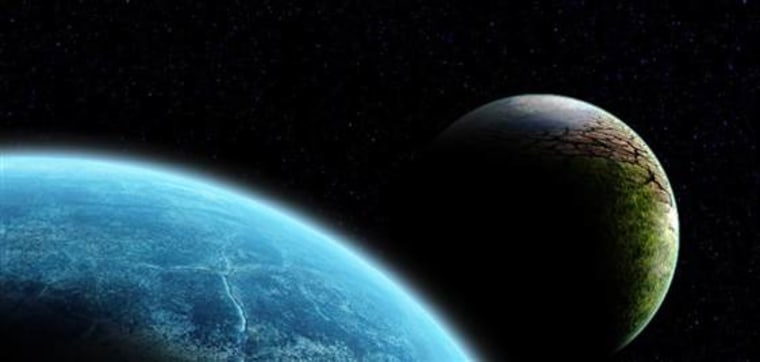The universe may end in another 10 billion years or sooner if the heaviest of all the known elementary particles, the top quark, is even heavier than previously thought, researchers say.
If the top quark is not heavier than experiments currently suggest, then an even stranger fate may await the cosmos: disembodied brains and virtually anything else could one day randomly materialize into existence.
The protons and neutrons that make up the nuclei of atoms are made of elementary particles known as quarks. Protons and neutrons are made up of the lightest and most stable flavors of quark : the up quark and down quark. The heaviest and most unstable flavor of quark is the top quark, which current experiments suggest is about 184 times heavier than the proton. [ Wacky Physics: The Coolest Little Particles in Nature ]
Microscopic bubbles
Now, theoretical physicists find that if the top quark is heavier than currently thought, the energy suffusing the vacuum of empty space may one day destabilize.
"If the vacuum destabilizes, we would all die," said researcher Sean Carroll, a theoretical physicist at the California Institute of Technology.
First, microscopic bubbles would appear and affect the Higgs field, which pervades space and is thought to be responsible for the masses of particles such as electrons and quarks. Those tiny bubbles in space, however, would cause the Higgs field to have lower energy than its current value.
"These bubbles appear only rarely, but when they do, they expand at close to the speed of light," Carroll told LiveScience.
If such a bubble were to hit Earth, the masses of all the particles that depend on the Higgs field would suddenly change.
"Physics and chemistry as we know them would become very different, and certainly no living creature would survive," Carroll said. [ The Top 10 Ways to Destroy Earth ]
These bubbles may appear every 20 billion years or so. In comparison, the universe is about 13.8 billion years old, meaning the universe may have 10 billion years or so left to live. These bubbles could possibly materialize even faster — tomorrow or in the next few years — although the chances are quite slim, Carroll and his colleague Kimberly Boddy at the California Institute of Technology said.
Disembodied brains
If the universe is not doomed by the top quark, it could face an even more bizarre fate — one dominated by so-called Boltzmann Brains.
In principle, a room full of monkeys randomly hitting keys on typewriters could eventually come up with the complete works of Shakespeare. Indeed, any random event, no matter how unlikely, could happen, given enough time.
One extraordinarily unlikely possibility is that anyone or everyone might have randomly come into existence with a complete set of memories no more than a moment ago from a cluster of atoms — an idea suggested by Austrian physicist Ludwig Boltzmann. One might even propose all intelligent minds in the universe are disembodied brains with complete sets of memories that randomly fluctuated out of chaos rather than evolving conventionally from a relatively orderly past. If everyone's minds are suspect, one might never be able to tell whether one's model of the universe is viable or not.
The universe is not only expanding, but its growth is apparently accelerating, perhaps driven by energy suffusing the vacuum of empty space. In principle, such a version of the cosmos may last forever, remaining warm enough to drive random fluctuations creating Boltzmann Brains.
However, if the top quark is massive enough to potentially doom all life, then the energy of the vacuum would be low enough to avoid the unsettling concept of Boltzmann Brains.
"We're not arguing that Boltzmann Brains exist — we're trying to avoid them," Carroll said.
In order "to bring on rapid cosmic doomsday and avoid the Boltzmann Brain menace," the top quark's mass needs to be about 178 billion electron volts, corresponding to 188 times the mass of the proton, Carroll said. This is about 3 percent heavier than the top quark's current measured mass of 173 billion electron volts, "but there are uncertainties on that measurement, and the top quark could easily be a few billion electron volts heavier than we think," he added.
As the world's largest and most powerful particle accelerator — the Large Hadron Collider — gathers more data, researchers will get a better idea of the top quark's mass and, potentially, the universe's destiny.
"It's interesting and fun to connect something measurable in experiments to speculations about the future of the universe," Carroll said.
Follow us @livescience, Facebook and Google+. Original article on LiveScience.
